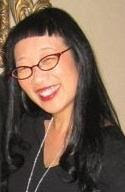 by Paula Yoo
by Paula Yoo
Welcome to the final day of PiBoldMo! Congratulations! You made it! By now, hopefully you have come up with 29 fantastically fun and totally awesome ideas for future picture books. 
So for Day 30, you need one more idea. Come on, you can do it!
But in case you are burned out, here’s one last idea sparker to help you make it through Day 30.
Have you ever heard of the “elevator pitch”? It’s a famous phrase used all the time in the writing industry, as well as in the business world. In a nutshell, the “elevator pitch” is how long it should take for you to tell someone what your book is about. By the time your elevator reaches your floor, you should have been able to “pitch” your book idea in that brief amount of time.
In other words, an elevator pitch should last about 30 seconds.
So look over your 29 ideas so far. Can you pitch each idea in 30 seconds?
Pretend you waiting for the elevator at the Society of Children Book Writers &Illustrators national conference. To your left stands a famous children’s book editor. The two of you engage in some small talk as you wait for the elevator. The editor learns you are a writer at the conference. Eager, he/she asks if you have written anything.
And then the elevator doors open.
Oh no! You probably have 30 seconds to pitch your amazing picture book to this editor before the elevator reaches his/her floor.
So how to craft your elevator pitch? Some tips to get you started:
1. Start with a cliffhanger “hook.”
This can be in the form of a question or a one-sentence “logline” that conveys your book’s main conflict. “What if a child loses her beloved stuffed toy animal at a laundromat and can’t tell her dad because she hasn’t learned to talk yet?” Or think of your hook in terms of theme or even a personal anecdote that relates to your book. For example: “I have the most stubborn cat who is convinced the full moon is a bowl of milk. She will do anything to reach that moon.” (Note:
Obviously I’m using “Knuffle Bunny” and “Kitten’s First Full Moon” as examples.)
2. Set up the main character and conflict.
Then launch into the heart of your story—who’s your main character? Why should we love him/her? What obstacle must they overcome in their quest? (“Trixie and Knuffle Bunny have never been separated… until now.”)
3. Leave ‘em hanging. Don’t spoil the actual ending.
Conclude with an open ending—will Trixie learn how to speak before Knuffle Bunny is lost forever?
For Day 30, to get your brain ready for that final idea, why not take an hour or two to review your previous 29 ideas? See if you can “pitch” them to a friend. Sometimes I will take a friend out for coffee and pitch them some ideas I am working on to get their feedback on how clear and concise my ideas sound to them. I even have them “time” me with a stop watch!
When you are working on your elevator pitch, it will help you focus on what the heart of each book is truly about… you’ll learn quickly as to what the most important point of the book is.
Once you practice your elevator pitches for some of the 29 ideas you’ve already come up with, then try the same approach for your 30th idea. See if you can just brainstorm a fun 30th picture book idea in 30 seconds or under. You can even record yourself as you talk out loud. Or you can write them down
Please welcome my guest today! Her name is Paula Yoo and she's a violinist and a children's and young adult author. In this interview, Paula talks about her musical background, her books, and the National Picture Book Writing Week, among other things.
Thanks for this interview, Paula. It's not often I get to interview a violinist who's also an author. Why don't you start by telling us a little about Paula, the violinist.
I have wan ted to be a writer since I was a little girl. I was inspired after reading "Charlotte's Web" in the first grade - I started writing my own stories after reading that book. My first "novel" was a 75-page handwritten book entitled "The Girl Called Raindrop." (Hey, I was only seven years old at the time!) I actually mailed it in to Harper & Row because they published my favorite series, the "Little House on the Prairie" books by Laura Ingalls Wilder. They wrote a very nice letter back saying I should try out for their children's writing contest. I remember being upset and tearing up the letter because I felt I was not a "child" writer - I was a "real" writer! So I think of that as my first rejection letter! LOL!
ted to be a writer since I was a little girl. I was inspired after reading "Charlotte's Web" in the first grade - I started writing my own stories after reading that book. My first "novel" was a 75-page handwritten book entitled "The Girl Called Raindrop." (Hey, I was only seven years old at the time!) I actually mailed it in to Harper & Row because they published my favorite series, the "Little House on the Prairie" books by Laura Ingalls Wilder. They wrote a very nice letter back saying I should try out for their children's writing contest. I remember being upset and tearing up the letter because I felt I was not a "child" writer - I was a "real" writer! So I think of that as my first rejection letter! LOL!
Fast forward many years - I was an English major in college, and then received my M.S. in journalism and an MFA in creative writing. I spent the first ten years after college working as a newspaper and magazine journalist. Journalism taught me how to write on deadline - it was a great experience. I then taught for a little bit before switching over to being a fu ll-time TV screenwriter for dramas. During that time, I sold my first two picture books and first YA novel.
ll-time TV screenwriter for dramas. During that time, I sold my first two picture books and first YA novel.
Tell us about your books. Are they violin related?
My first two children's picture books are not violin-related, but I still feel the lessons learned in these books are very similar to what a violinist learns. My first picture book was SIXTEEN YEARS IN SIXTEEN SECONDS: THE SAMMY LEE STORY (Lee & Low 2005). It was a biography of the Olympic gold medalist diver Dr. Sammy Lee. My second picture book, SHINING STAR: THE ANNA MAY WONG STORY (Lee & Low 2009), came out in July 2009. It is about the ground-breaking actress and first Asian American female movie star Anna May Wong. In both books, Dr. Lee and Anna May Wong worked hard at perfecting their art (for Dr. Lee, it was mastering difficult dives and for Anna May Wong, it was learning the craft of acting). They also struggled to come to terms with their own artistic dreams versus their parents' dreams for them to have secure lives. Often times, parents want their children to have "regular" jobs and financial security. Pursuing sports or the arts is a very risky dream. I identified with Dr. Lee and Anna May Wong for those same reasons.
My first YA novel, GOOD ENOUGH, was published in 2008 by HarperCollins. This book is based on my own life growing up as a "violin geek." I have often read books about violinists that come off as very "well-researched," but do not have the authenticity and "
This episode of Just One More Book! is part of our showcase coverage of the International Reading Association’s 52nd annual conference.



Mark speaks with:
- Denise Chapman, a middle school teacher from Pensacola, Florida who uses picture books in her classroom;
- Scholastic.com producer Karen Wong about their summer buzz program to promote summer reading among children; and,
- Book editor, Alessandra Balzer on her work with author Mo Willems.
Participate in the conversation by leaving a comment on this interview, or send an email to [email protected].
Tags:
Alessandra Balzer,
Denise Chapman,
IRA2007,
Karen Wong,
scholastic.comAlessandra Balzer,
Denise Chapman,
IRA2007,
Karen Wong,
scholastic.com
 by Paula Yoo
by Paula Yoo![]()








Thank you for these great tips! 30 second pitch? Wow.
Hooray–what a nice way to end up the challenge, with a reminder that these ideas we’ve been working on can be ACTUAL STORIES TO PITCH!
Thanks for the tips–look forward to seeing you at NaPiBoWriWee in May!
Hooray! What a nice way to end the challenge, with a reminder that these ideas we’ve been working on can be ACTUAL STORIES TO PITCH!
Thanks for the tips–look forward tos eeing you at NaPiBoWriWee in May!
Excellent tips, Paula! It’s funny that you shared this post because I’ve been working on elevator pitches for my picture book ideas. I only did my top five favorites, though. It might be good practice to work on some more. Thanks for sharing!
Great idea to see which are worth pursuing too, thanks.
NaPiBoWriWee sounds amazing–I’ll mark my calendar now.
Great advice, Paula, thanks. I plan on reviewing my 31 ideas for my favorites, and finding these pitch points.
See you for NaPiBoWriWee!
Hi Paula! So nice to see you here.
This is such valuable advice. A great way to put our ideas to the test and to hone our thinking process. I better get busy–I’m going to our SCBWI France Regional Conference this weekend–it’s called “From Idea to Book”. Quelle coincidence!
Hi Paula! I loved the post. Great tips, thank you! Happy Holidays!
Thank you, Paula! That’s exactly the push I needed for my last idea!
(P.S. My husband and I are HUGE fans of Eureka. )
)
You genius, Yoo.
I am absolutely up for NaPiBoWriWee. And thanks for the great post! Hmm, a 30-second sprint to see what I can come up with in terms of new ideas… I like the sound of that challenge. As well as the push to actually turn my ideas into stories that I’ll need to pitch!
Thanks for your tips, Paula! : ) The pitch is where the rubber meets the road.
Hi! Wow, thanks everyone for your kind comments. I am so proud of everyone for doing so well at this year’s PiBoIdMo! Congrats again to Tara for creating such a fun event and thanks for inviting me to blog! Happy Writing, everyone! xo Paula
I’ve never heard of the elevator pitch before, thanks for posting about it. Now I’m going to practice. Your May challenege sounds fun, I think I might just try it!
Thanks for the tips, Paula. This is something I really need to practice! I’m embarrassed to say I’ve been tongue-tied more than once in the presence of an editor or agent.
This is SO helpful…Mom practiced in the mirror and nailed it! This is such a confidence-booster!
Great tips Paula! I’m looking forward to another NaPiBoWriWee. Right now I’m working earnestly on one I drafted for this year’s.